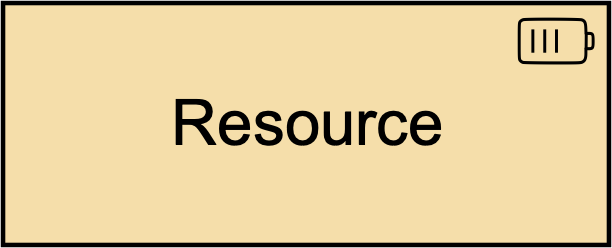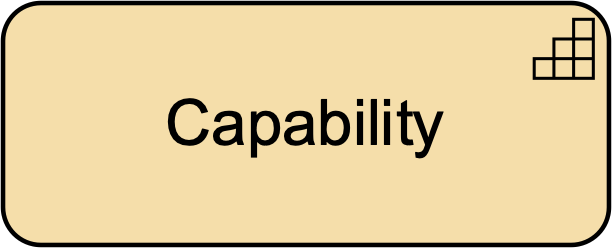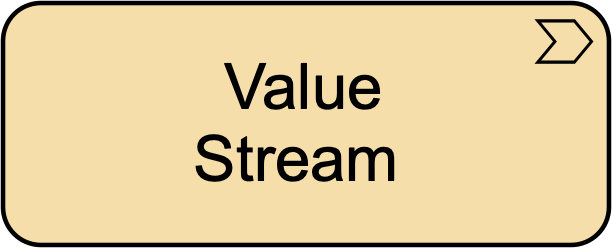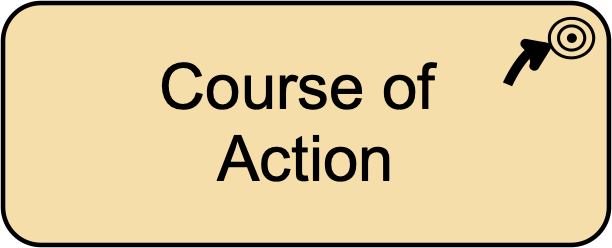Strategy Layer
The strategy elements are typically used to model the strategic direction and choices of an enterprise, as far as the impact on its architecture is concerned. They can be used to express how the enterprise wants to create value for its stakeholders, the capabilities it needs, the resources needed to support these capabilities, as well as how it plans to configure and use these capabilities and resources to achieve its aims (see Motivation Elements). Strategy elements are used to model the strategic direction and choices of the enterprise, whereas Business Layer elements (Business Layer) are used to model the operational organization of an enterprise.
Intentionally, the set of elements in the Strategy Layer is kept as small and simple as possible. The Strategy elements are more abstract than the Business elements. The Strategy Layer abstracts from the difference between active and passive structure, and from the internal/external distinction in the Business, Application, and Technology layers. Unlike these layers, it therefore does not have service or interface elements.
Strategy Elements Metamodel
Strategy Elements Metamodel gives an overview of the strategy elements and their relationships. Note that “Course of Action” is a behavior element but not a strategy behavior element, because it models a different type of behavior and has a different set of relationships.
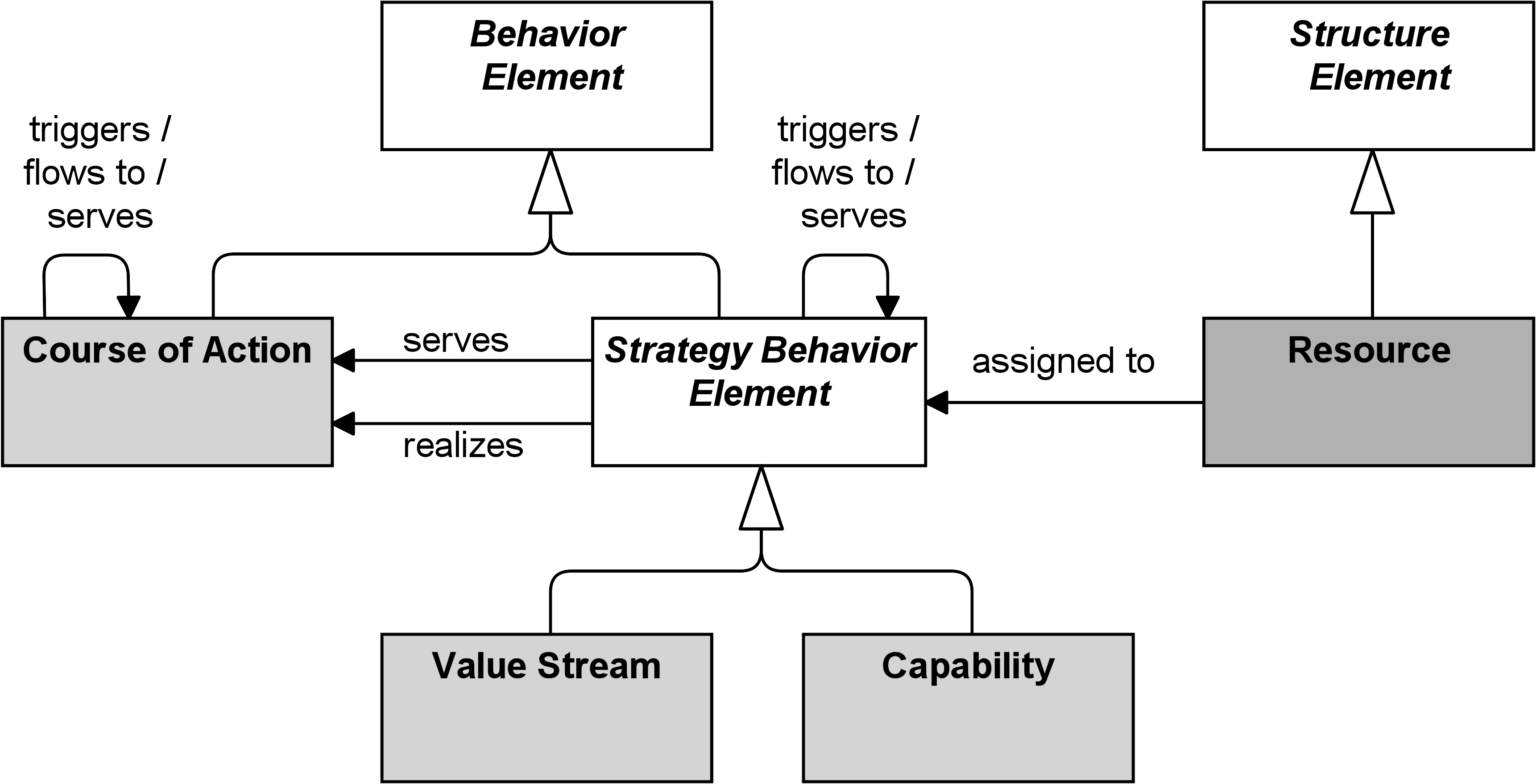
| This figure does not show all permitted relationships; every element in the language can have composition, aggregation, and specialization relationships with elements of the same type. Furthermore, there are indirect relationships that can be derived, as explained in Derivation of Relationships. The full specification of permitted relationships can be found in Relationships (Normative). |
Structure Elements
Resource
A resource represents an asset owned or controlled by an individual or organization.
Resources are a central concept in the field of strategic management, economics, computer science, portfolio management, and more. They are often recognized along with capabilities, to be sources of competitive advantage for organizations. Resources are analyzed in terms of strengths and weaknesses, and considered when implementing strategies. Due to resources being limited, they can often be a deciding factor for choosing which strategy, goal, and project to implement and in which order. Resources can be classified in different ways; including tangible assets, intangible assets, and human assets. Examples of tangible assets include financial assets (cash, securities, borrowing capacity, etc.) and physical assets (plant, equipment, land, mineral reserves, etc.). Examples of intangible assets include technology assets (patents, copyrights, trade secrets, etc.), reputation assets (brand, relationships, etc.), and culture assets. Examples of human assets include skills/know-how, capacity for communication and collaboration, and motivation.
Resources are realized by active and passive structure elements and are therefore classified as structures that are neither active nor passive. The name of a resource should preferably be a noun.

Behavior Elements
Capability
A capability represents an ability that an active structure element, such as an organization, person, or system, possesses.
In the field of business, strategic thinking and planning delivers strategies and high-level goals that are often not directly implementable in the architecture of an organization. These long-term or generic plans need to be specified and made actionable in a way that both business leaders and Enterprise Architects can relate to, and at a relatively high abstraction level.
Capabilities help to reduce this gap by focusing on business outcomes. On the one hand, they provide a high-level view of the current and desired abilities of an organization, in relation to its strategy and its environment. On the other hand, they are realized by various elements (people, processes, systems, and so on) that can be described, designed, and implemented using Enterprise Architecture approaches. Capabilities may also have serving relationships; for example, to denote that one capability contributes to another.
Capabilities are classified as behavior in the ArchiMate language because they describe abilities: what the enterprise can (is able to) do (now or in the future). Capabilities are expressed in general, high-level terms that are typically realized by a combination of organization, people, processes, information, and technology. For example, business planning, customer management, or asset management [21]. This capability concept corresponds to the business capability in the TOGAF framework [6].
Capabilities are typically aimed at achieving some goal. Capabilities are themselves realized by core elements. To denote that a set of core elements together realizes a capability, grouping can be used.
Capabilities are often used for capability-based planning, to describe their evolution over time. To model such so-called capability increments, the specialization relationship can be used to denote that a certain capability increment is a specific version of that capability. Aggregating those increments and the core elements that realize them in plateaus (see Plateau) can be used to model the evolution of the capabilities.
The name of a capability should emphasize “what we do” rather than “how we do it”. Typically, it should be expressed as a compound noun or gerund (-ing form of verb); e.g., “Risk Management”, “Market Development”, “Product Engineering”, etc.

Value Stream
A value stream represents a sequence of activities that create an overall result for a customer, stakeholder, or end user.
A value stream describes how an enterprise organizes its activities to create value. As described in the TOGAF Series Guide: Value Streams [17], a key principle of value streams is that value is always defined from the perspective of the stakeholder – the customer, end user, or recipient of the product, service, or deliverable produced by the work. The value obtained is in the eye of the beholder; it depends more on the stakeholder’s perception of the worth of the product, service, outcome, or deliverable than on its intrinsic value; i.e., the cost to produce. This is modeled in the ArchiMate language by using the value element and in turn, is associated on the one hand with the result being produced, and on the other hand may be associated with the stakeholder.
Value streams may be defined at different levels of the organization; e.g., at the enterprise level, business unit level, or department level. Value streams can be a composition or aggregation of value-adding activities. These are also modeled with the value stream element and known as value (stream) stages. Each of which creates and adds incremental value from one stage to the next. These stages are typically related using flow relationships to model the flow of value between them. Resources can be assigned to value streams and capabilities can serve (i.e., enable) a value stream.
Importantly, value streams and business processes may seem alike, but they are defined at different abstraction levels and serve separate purposes. A business process describes the (time-ordered) sequence of behaviors required to create some result for an individual case, and it may describe alternative paths and decision points (modeled with junctions). In contrast, a value stream focuses on the overall value-creating behavior from the perspective of the importance, worth, or usefulness of what is produced, and is not a description of time-ordered tasks for individual cases. Value streams (and capabilities) reflect an organization’s business model and value proposition, whereas business processes (and business functions) reflect its operating model. At their respective abstraction levels, value streams and business processes both represent the “enterprise in motion”, whereas capabilities and business functions both describe the “enterprise at rest”.
Value streams are typically realized by business processes and possibly other core behavior elements. The stages in a value stream provide a framework for organizing and defining business processes, but different parts of the organization may have their own implementations of business processes that realize the same value stream stage.
It is recommended that the name of a value stream be expressed using a verb-noun construct in the active tense; e.g., “Acquire Insurance Product”.

Course of Action
A course of action represents an approach or plan for configuring some capabilities and resources of the enterprise, undertaken to achieve a goal.
A course of action represents what an enterprise has decided to do. Courses of action can be categorized as strategies and tactics. It is not possible to make a hard distinction between the two, but strategies tend to be long-term and fairly broad in scope, while tactics tend to be shorter-term and narrower in scope.

Example
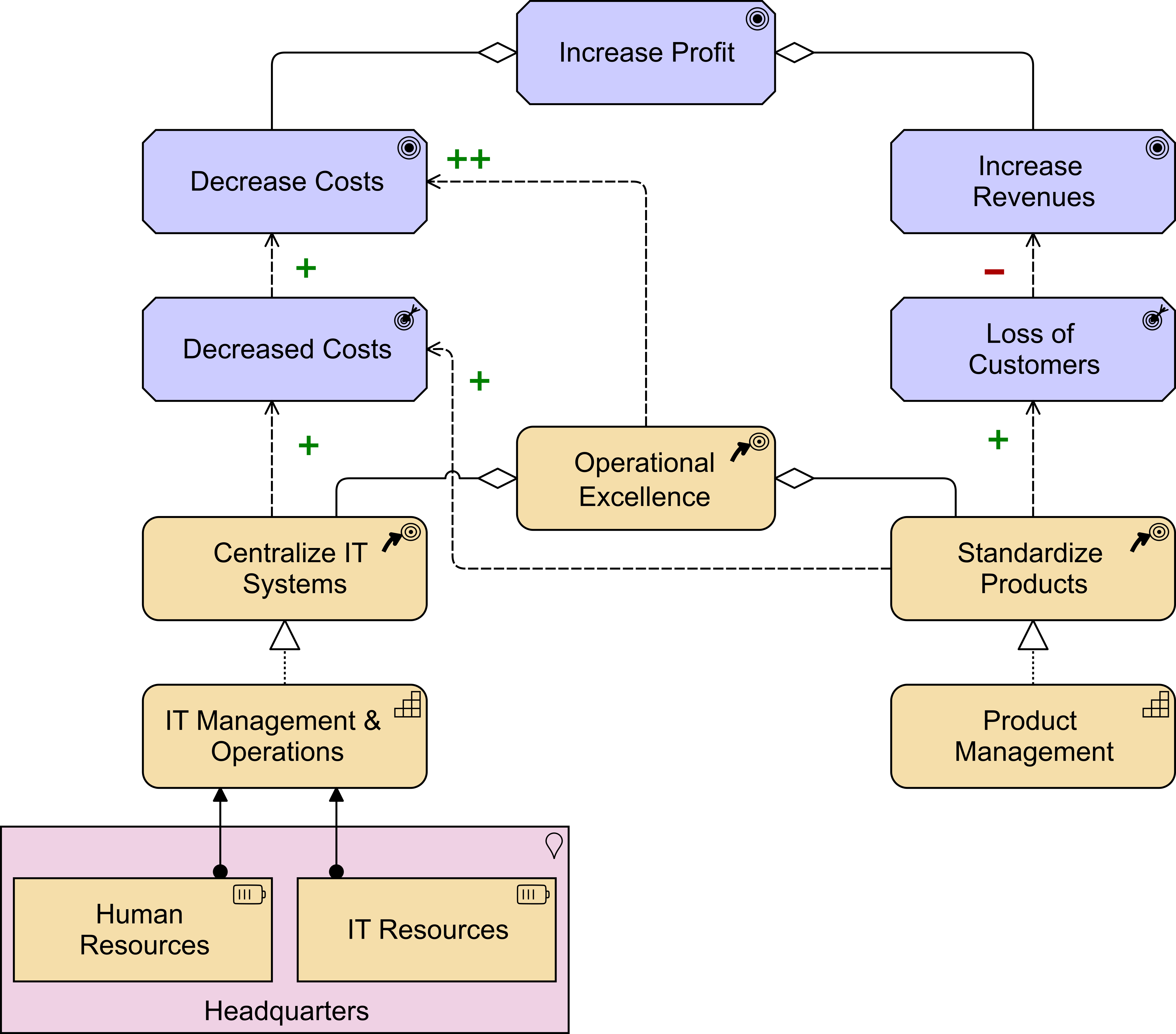
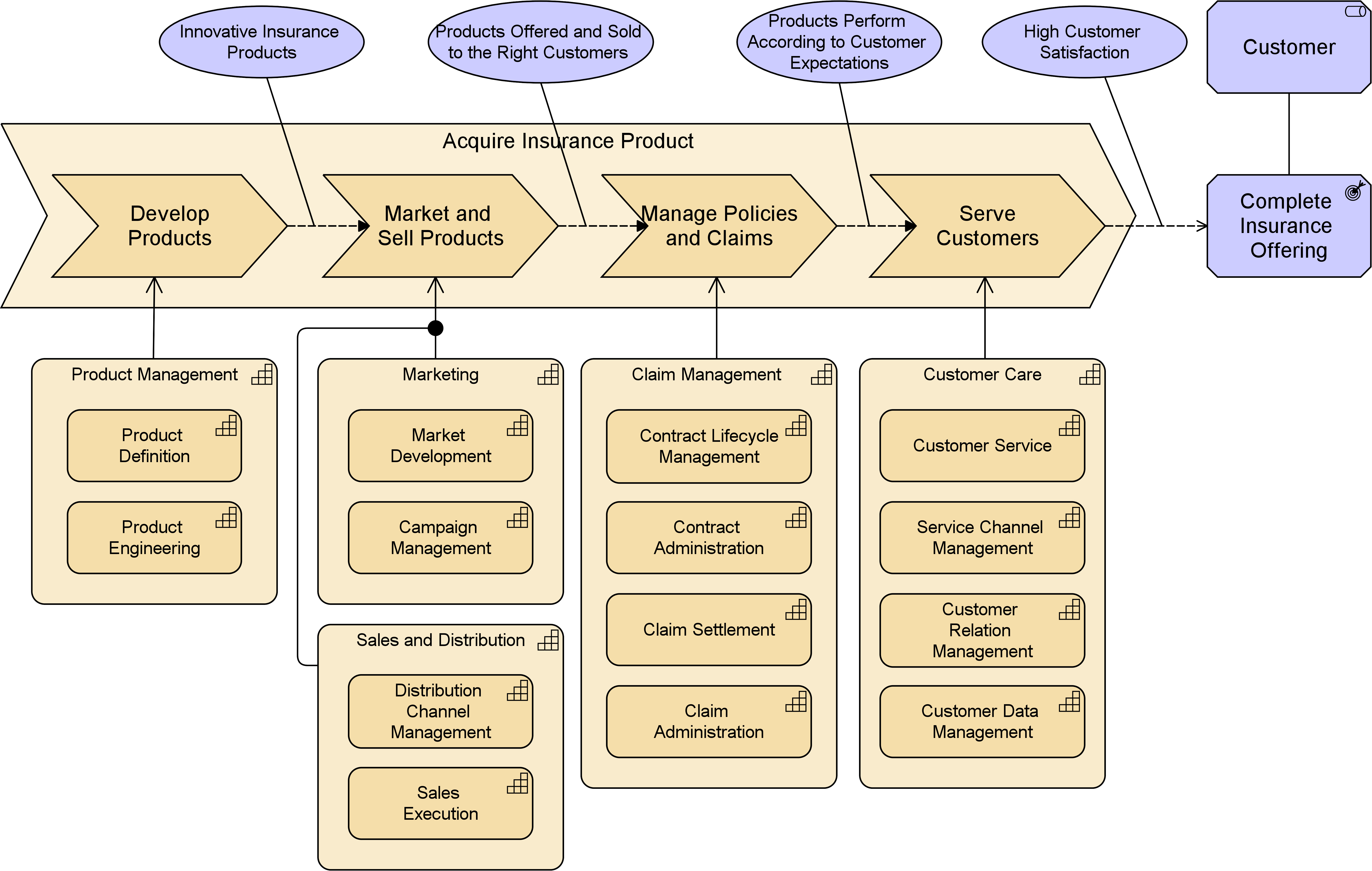
Summary of Strategy Elements
Strategy Elements gives an overview of the strategy elements, with their definitions.
| Element | Description | Notation | ||
|---|---|---|---|---|
Resource |
Represents an asset owned or controlled by an individual or organization. |
|
||
Capability |
Represents an ability that an active structure element, such as an organization, person, or system, possesses. |
|
||
Value Stream |
Represents a sequence of activities that create an overall result for a customer, stakeholder, or end user. |
|
||
Course of Action |
Represents an approach or plan for configuring some capabilities and resources of the enterprise, undertaken to achieve a goal. |
|
Relationships with Motivation and Core Elements
Relationships Between Strategy Elements and Motivation and Core Elements shows how the strategy elements are related to core elements and motivation elements. Internal and external behavior elements may realize strategy behavior elements (value streams and capabilities), while an active or passive structure element may realize a resource. Capabilities, value streams, courses of action, and resources may realize or influence requirements (and indirectly, as described in Derivation of Relationships, also principles or goals), and a course of action may also realize or influence an outcome (and, indirectly, also a goal).

